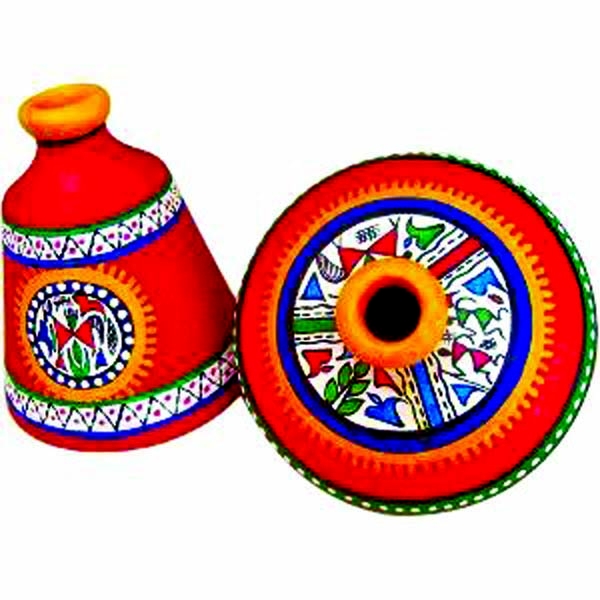
Sheikh Arif Bulbon :
Terracotta art is the earliest form of plastic art in which the Bengal artists excelled. The art products in terracotta or burnt clay satisfied the creative impulse of the artists and also met the domestic and ritual needs of ordinary man.
Clay objects were either baked in the sun or burnt into terracotta for hardening and durability and were used by man in his daily life since pre-historic times.
Due to rareness of stone and the complex technology involved in metal sculpture, the artistic desire of Bengali artists found expression in clay, which was abundantly available, and it hardly involved either any complex technical know-how or any heavy financial involvement. Thousands of untutored artists produced innumerable terracotta objects from pre-historic time.
Basically, the architectural edifices of ancient and medieval Bengal are not bared of ornamental representation in the form of figurative art, floral designs and abstract motifs.
Terracotta and stone-carving as an aesthetic art was not unknown in ancient Bengal. The terracotta ornamentations in the Buddhist Viharas and the Hindu temples bear witness to this fact.
The stone-carving art profusely worked in the Buddhist and Hindu deities of ancient Bengal attracts the attention of the connoisseurs of art. But the calligraphic art in the truest sense of the term was scarcely noticed on any object of embellishment of ancient-Bengal.
On the other hand these three types of ornamental art could satisfactorily be found in the monuments and architectural members of medieval Bengal.
The abundant finds of objects made of terracotta in Bengal is a sure evidence of the use of clay as a most common and popular medium of art expression of the people from the very dawn of civilisation in this deltaic land.
The art was practised in Bengal from the earliest through early medieval to medieval times and even persisted on Hindu monuments till the mid-nineteenth century. The art is noticed in all forms – small clay figurines, clay sculptures in the round, but the most notable ones are the plaques. Terracotta panels and friezes, used as surface decoration on brick buildings, are Bengal’s remarkable contributions to the sum-total of South Asian art.
Terracotta plaques were known to art historians from the finds at ancient sites like Bangarh and Mahasthan. Their beauty and significance was revealed with an excavation at Paharpur, where was found the biggest haul. The finds at Mainamati monuments gave a further boost to the realisation that the terracotta plaques belonged to a whole art tradition covering the entire geographical region.
Plaques were partly moulded and partly hand modelled. The main purpose of these terracotta plaques in the early period was to decorate the walls of the temples and to break monotony of the severe plainness of the temple walls.
The terracotta plaques covered huge area of a temple complex. Such a stupendous work required the services not of a single modeller, but that of an entire guild of modellers. They were required to produce plaques in quicker rate and that was why they apparently could not concentrate to the aesthetic quality of the plaques. The plaques are found to be not of uniform size, neither they were uniformly fired. Some times the composition within a plaque crossed the outer frames.
The use of terracotta art in adorning architectural buildings seems to have undergone a total eclipse in Bengal after the Palas, possibly under the pressure of the heretic art of the succeeding periods.
For centuries after Paharpur and Mainamati, we do not find evidence of the continuity of this art form. It can be assumed, however, that in the villages, this narrative art was kept alive through various forms and mediums such as scroll painting, idol making, lacquer-painted wooden manuscript covers etc.
The terracotta panels adorning the Muslim monuments depict designs of abstract, geometric and floral patterns only.
Terracotta panels were extensively used on Muslim buildings; the exquisite floral and geometric carvings replacing the animal and human figures of the earlier times.
The Anatolian and central Asian technique of the Turkic world, which had its own age-old tradition of the art, enriched terracotta decorations on Muslim buildings.
The terracotta figurines of Bangladesh reached its highest stage of artistic excellence in the Gupta period. About thirty terracotta figurines belonging to the Gupta period were discovered.
These terracotta figurines share the qualities of contemporary stone and bronze sculptures and also the paintings of this period. Although single as well as double moulded terracotta figurines were being made in the Gupta period yet the modellers of Bangladesh confined themselves to single moulded technique. n

